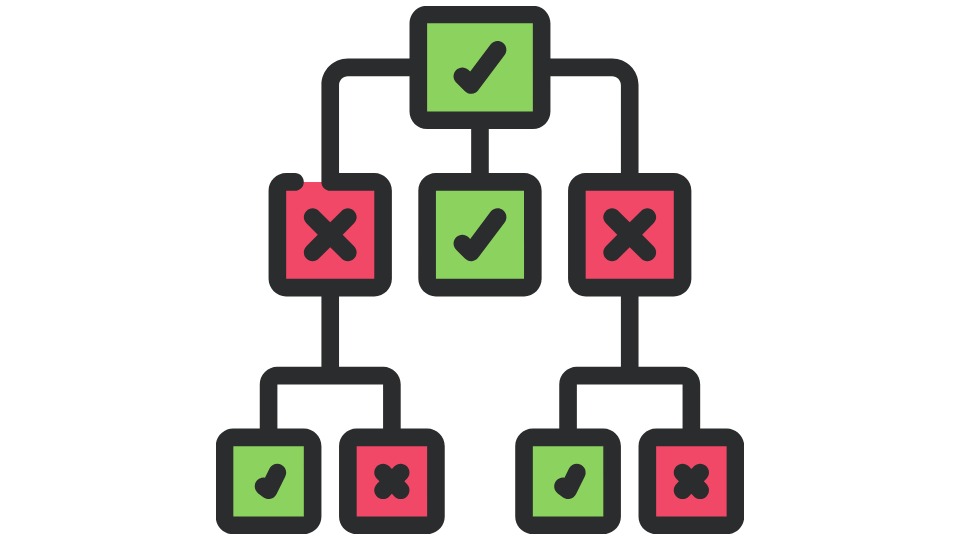In the realm of data analysis and machine learning, decision trees have emerged as a powerful tool for both classification and regression tasks. Their intuitive structure, resembling a tree with branches representing decisions, makes them accessible to both novice and experienced data scientists. This article aims to provide a comprehensive overview of decision trees, exploring their definition, functionality, and applications, while also weighing their advantages and disadvantages in various contexts.
Decision trees are an effective and comprehensible tool used in data analysis and machine learning. They are structured as flowchart-like diagrams that represent decisions and their possible consequences, making them easy to understand and interpret. Each node in a decision tree signifies a decision point or a test on a particular feature, while the branches represent the outcomes of these decisions. This visual representation allows users to follow a clear path from the initial question to the final decision, making it an effective method for both classification and regression tasks.

In essence, a decision tree is a non-parametric supervised learning algorithm that helps in making predictions based on input data. It operates by recursively partitioning the data into subsets, which increases the homogeneity of the resultant nodes. This means that as the tree grows, the data points in each node become more similar to each other, leading to more accurate predictions. Decision trees are widely used in various fields, including finance, healthcare, and marketing, due to their versatility and ease of use.
The functioning of decision trees revolves around a systematic process of splitting data into subsets based on specific attributes. Initially, the algorithm evaluates various features of the dataset to determine the most effective attribute for splitting the data at each node. This decision is made using criteria such as Gini impurity or information gain, which measure the homogeneity of the resultant subsets. By selecting the attribute that maximizes the purity of the resulting nodes, the decision tree effectively narrows down the choices, leading to more accurate predictions or classifications.
Once the best attribute is identified, the data is divided into two or more sub-nodes, creating a branching structure that resembles a flowchart. Each subsequent node represents a further decision point, where the process of evaluating attributes continues until a stopping criterion is met, such as reaching a maximum depth or a minimum number of samples in a node.

This iterative process allows the decision tree to capture complex relationships within the data, ultimately resulting in a model that can make informed predictions based on the patterns it has learned. The final output of a decision tree is a set of rules that can be easily interpreted, making it a popular choice for both beginners and experts in the field of machine learning.
Decision trees play a pivotal role in the realm of machine learning, serving as a fundamental algorithm for both classification and regression tasks. As a non-parametric supervised learning method, decision trees are particularly valued for their simplicity and interpretability. They operate by creating a model that predicts outcomes based on input data, effectively breaking down complex decision-making processes into a series of straightforward, binary choices. This tree-like structure not only aids in visualizing the decision-making process but also enhances the understanding of how different features contribute to the final prediction.
In machine learning, decision trees utilize various algorithms to determine how to split nodes into sub-nodes, thereby increasing the homogeneity of the resultant groups. This process is crucial for improving the accuracy of predictions, as it allows the model to learn from the data iteratively. Moreover, decision trees can handle both numerical and categorical data, making them versatile tools in various applications, from finance to healthcare.
In the finance sector, decision trees are instrumental in credit scoring, fraud detection, and investment strategies. By analyzing historical data, decision trees can predict customer behavior, such as the likelihood of a customer churning or responding positively to a marketing campaign. This predictive capability allows businesses to tailor their strategies effectively, ensuring better customer retention and optimized marketing efforts.
In healthcare, decision trees assist in diagnosing diseases by evaluating patient symptoms and medical history. They help healthcare professionals make informed decisions about treatment options based on the likelihood of various outcomes.
Additionally, decision trees are widely used in the field of data mining, where they help in segmenting data into meaningful categories, thus facilitating better insights and understanding of complex datasets. Their ability to simplify complex decisions into manageable choices makes them invaluable in both academic research and practical applications.
One of the most significant benefits of decision trees is their interpretability; the tree structure allows users to visualize the decision-making process, making it easier to understand how predictions are made.
Additionally, decision trees require minimal data preparation compared to other algorithms, as they can handle both numerical and categorical data without extensive preprocessing. They are also robust to outliers, meaning that extreme values in the dataset do not significantly affect the model’s performance.
Furthermore, decision trees can be used for both classification and regression tasks, showcasing their flexibility in various applications.
A major concern of decision trees is their tendency to overfit the training data, particularly when the tree is deep and complex, leading to poor generalization on unseen data. This overfitting can result in models that are too tailored to the training set, capturing noise rather than the underlying patterns.
Additionally, decision trees can be unstable; small changes in the data can lead to different tree structures, which may affect the model’s reliability. They can also be computationally expensive, especially when dealing with large datasets, as the algorithm requires significant resources to evaluate potential splits at each node.
Decision trees are a powerful and interpretable tool in data analysis and machine learning, offering clear visualizations of the decision-making process. Their advantages, including ease of use and flexibility, make them accessible across industries like finance and healthcare. However, they can be prone to overfitting and bias if not carefully managed. Despite these limitations, decision trees remain a foundational technique, and integrating them with advanced algorithms may enhance their effectiveness. By understanding their strengths and weaknesses, practitioners can maximize their potential to extract meaningful insights from data.